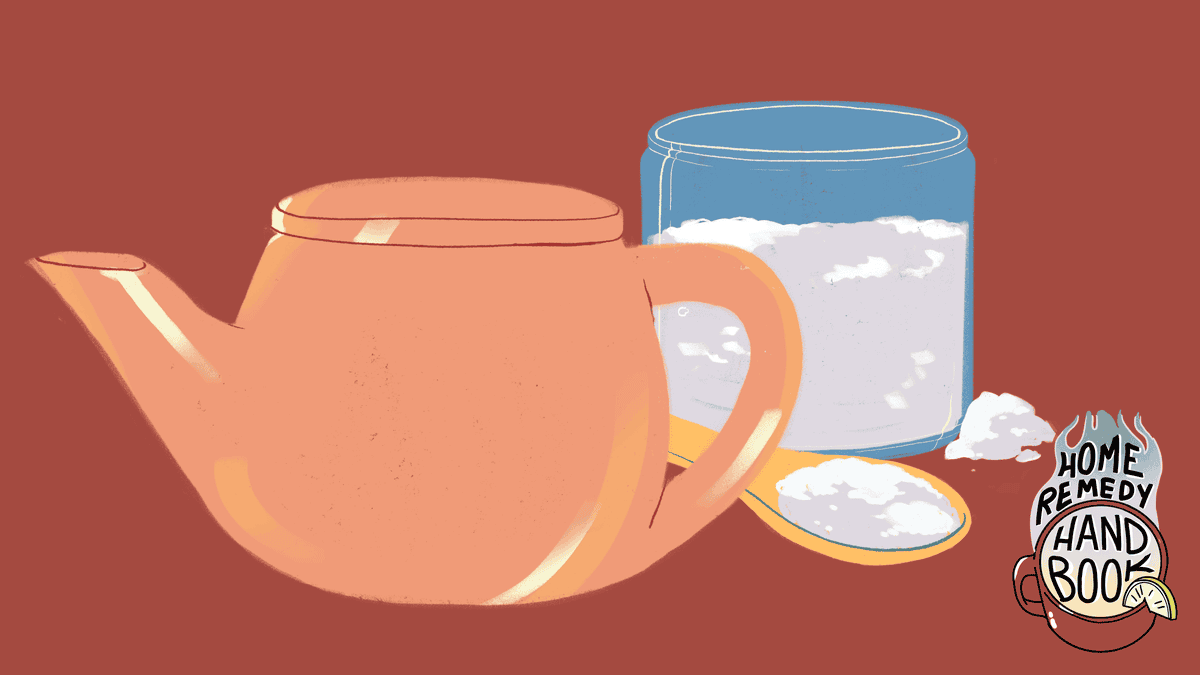A Beginner’s Guide to Using Neti Pot to Clear Your Sinuses

This post is part of our Home Remedies Guide , a review of home remedies from dubious to doctor-approved. Read more here .
If you’ve ever seen a neti pot in a pharmacy, you might be wondering what it is and why people use it. The neti pot , which looks like a kettle connected to a genie’s lamp, is a device that is used to flush the sinuses and remove stagnant mucus. The mechanism of neti pot is quite simple: you fill a pot with saline, then insert a nozzle into one nostril, allowing the liquid to flow through the sinuses, from where it exits the other nostril.
In the process, the salt water solution cleans out any dirt stuck in your sinuses, helping you breathe freely again. If you’ve ever been clogged for a week due to an allergy or sinus infection, relief from using a neti pot may seem like a small miracle.
While it’s a simple enough concept, it can be intimidating in practice because “it’s not natural to force a lot of water up your nose,” said Mas Takashima, an ENT specialist at Houston Methodist Hospital . However, with a little practice, using neti pot at home becomes easier—and it has a number of benefits, including relieving allergy symptoms, relieving nasal congestion, or mitigating the effects of an active respiratory infection.
Neti pot benefits
The main benefit of neti pot is that it clears the sinuses, making breathing easier and reducing the amount of congested mucus that can be a breeding ground for bacteria. “The purpose of the nose is to filter air for your lungs,” Takashima said. As with any filter device, it is important to keep this filter clean. Neti pot “keeps the sinuses open and provides good ventilation,” Takashima said.
This is especially helpful when your sinuses are congested due to a range of conditions, from allergies and nasal congestion to an active respiratory infection. An added benefit is that during an active infection, “the addition of salt water makes the environment less conducive to bacterial growth,” Takashima said. There is also some evidence that rinsing the sinuses with saline may provide some modest benefit in reducing the severity or duration of an upper respiratory tract infection.
How to use it
To use the neti pot, you will need to prepare a saline solution: you can either buy a ready-made bag from most pharmacies or make your own using a mixture of salt and baking soda. To prepare a saline solution, you will need distilled or boiled water. Although very rare, there have been documented cases of serious, sometimes fatal infections caused by drinking tap water , which contains very few microorganisms. To prevent this, the FDA recommends using either distilled or tap water that has been boiled for three to five minutes and then cooled.
From a technical point of view, it’s helpful to watch online tutorials on proper usage and be patient when you try. As Takashima points out, while using the neti pot may feel uncomfortable at first, if it hurts, it’s a sign that something is wrong. In his experience, the most common mistake people make is using plain water rather than saline, which can be painful. Another problem that can cause discomfort or pain is related to a deviated septum. If you feel like you have to force it too much, or it just doesn’t feel right to you, that’s a sign to stop.
An alternative to neti pot is a plastic bottle , where instead of pouring the solution up your nose, you squirt it. There are also battery powered kits if that’s a more convenient option. If you get sick, it’s a good idea to either thoroughly sterilize your neti pot or get a new one, as there is a risk of reinfection from a dirty pot.